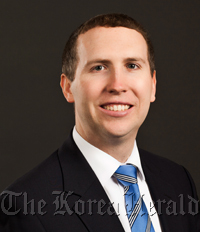This month provided a stark contrast on the Korean Peninsula. During the same week, there were elections for the National Assembly in South Korea and private meetings in North Korea where selections were made for leadership positions in the regime.
The campaign trail in a democracy like South Korea helps prepare candidates for leadership and set the national agenda going forward. This is done through a series of constituent meetings, television ads, debates and stump speeches. For a country like North Korea, there is uncertainty surrounding where leaders stand on important policies, and it is difficult to tell how well prepared the leaders are to run the country. Moreover, with North Korea’s new leader young and unknown, its people and the outside world only have North Korean media and propaganda explaining his credentials, rather than a campaign where his skills can be publicly tested. As future North Korean policies will now be associated with Kim Jong-un and this new leadership, the U.S. and its allies must show there is no uncertainty in responding to North Korean provocations, demonstrating to Kim Jong-un and the new leadership in North Korea that the only real path forward is for them to change their approach with their neighbors and the international community.
After Kim Jong-il’s death, North Korean media emphasized it would continue its military first policy, signaling there would be no change in its approach to domestic and foreign affairs. The North Korean calendar of events for the first few months provided Kim Jong-un the opportunity to be seen as the leader of the DPRK. He could also continue actions set in motion before Kim Jong-il’s death. These include the Feb. 29 deal with the U.S., which appeared close to finalization in early December. Unfortunately, the missile launch also appeared to have been planned before Kim Jong-il died.
With all the actions leading up to the 100th anniversary celebrations of Kim Il-sung’s birth, including the missile launch, now over, any future actions from North Korea will be associated with Kim Jong-un and this new leadership. Yet there is still uncertainty on how they will make their first real decision. There is plenty of evidence to suggest the belligerent tactics reminiscent of Kim Jong-il’s time will remain. This is certainly seen with the belief that North Korea will test a nuclear device in the near future to save face after the unsuccessful missile launch and seek to repeatpast successes using the missile launch then nuclear test tactic. Additionally, recent statements about turning Seoul to ash only intensify the feeling that North Korea’s hostile intent will remain unchanged.
However, there are rumors North Korea might be willing to reform. There were some statements suggesting North Korean leaders understand they are far from strong and prosperous. Kim Jong-un was recently quoted as saying: “It is the firm resolution of the Workers’ Party of Korea to enable our people, the best people in the world who have remained loyal to the party, overcoming all difficulties, to live, without tightening their belts any longer, and fully enjoy wealth and prosperity under socialism.”
Choe Yong-rim, Premier of North Korea, also stated in front of the Supreme People’s Assembly: “It is the most important target of the struggle set by the WPK for this year to bring about a signal improvement in the people’s standard of living.”
On the other hand, there have been previous statements indicating reform in the past only to have actions indicate otherwise.
The recent missile launch has increased mistrust once again between North Korea and the U.S. and its allies. Positive outreach from either side will be more unlikely in the near term, and political support for better engagement will decrease. Kim Jong-un and the North Korean leadership will have little room to make their first decision a good one for stability in the region. Yet the U.S. and its allies must be clear that missile launches and nuclear tests are not a right path for development. A strong contrast between policies that promote peace in Northeast Asia versus those that do not must still be made to North Korea. The direction of North Korea’s development will now be connected with Kim Jong-un and this new group of leaders. Their choices are difficult and dangerous; however, many changes will need to be made if the differences seen this month between North and South Korea are to lessen in the future.
 |
Nicholas Hamisevicz |
By Nicholas Hamisevicz
Nicholas Hamisevicz is the director of Research and Academic Affairs at the Korea Economic Institute. The views expressed here are his own. ― Ed.






![[Exclusive] Hyundai Mobis eyes closer ties with BYD](http://res.heraldm.com/phpwas/restmb_idxmake.php?idx=644&simg=/content/image/2024/11/25/20241125050044_0.jpg)
![[Herald Interview] 'Trump will use tariffs as first line of defense for American manufacturing'](http://res.heraldm.com/phpwas/restmb_idxmake.php?idx=644&simg=/content/image/2024/11/26/20241126050017_0.jpg)
![[Herald Review] 'Gangnam B-Side' combines social realism with masterful suspense, performance](http://res.heraldm.com/phpwas/restmb_idxmake.php?idx=644&simg=/content/image/2024/11/25/20241125050072_0.jpg)